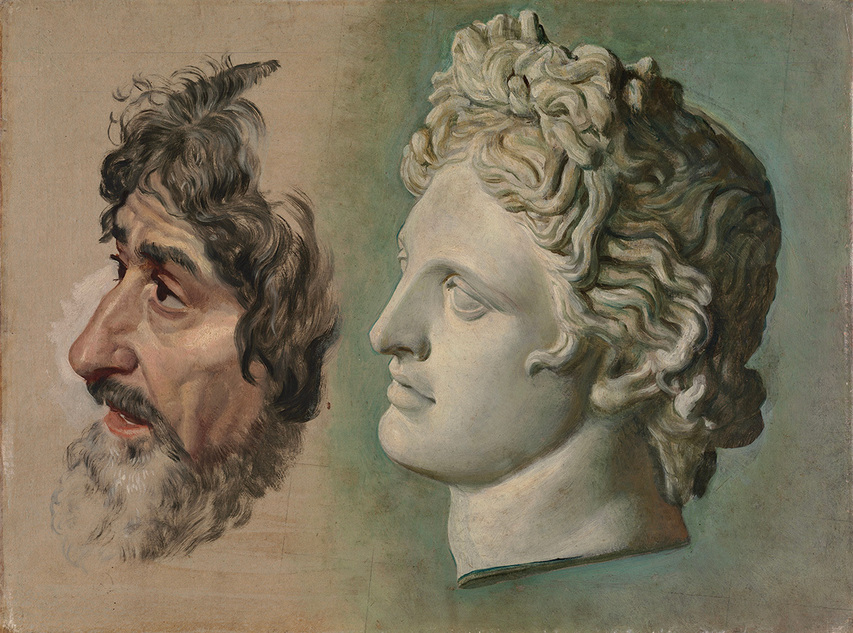Interest in history and in the artistic styles of the past, from Ancient Greece and Rome to the Middle Ages and the Renaissance, is alive and well in all areas of contemporary culture.
Undark Ages: Tales of Medievalism and Academia. Introduction to the Exhibition
- Type:
However, images of these past eras tend to be romanticised, reflecting the aspirations of those who are fascinated by them rather than what they really were. We see how role-playing game participants and fantasy readers generate their own versions of the Middle Ages, while artists, much like in Napoleonic France, increasingly look to Leochares and Polykleitos for beauty ideals.

Alexander Ivanov. Head of the Apollo Belvedere and Male Head Attitude of the Shivering Man Putting on a Shirt, second half of the 1840s. State Tretyakov Gallery
However, the study of past cultures and the search for new interpretations of their context is not just about nostalgia for times that we did not experience ourselves. It also shapes the image of a desired present—progressive and experimental or, on the contrary, stable and traditional.
The first part of the Undark Ages project looks at how artists, longing for a golden age of European culture, have often viewed the work of ancient masters through the lens of academicism, entailing a mechanical copying of classical models and creative stagnation—the repetition of aesthetic techniques and thematic monotony. The project questions the uncritical admiration for ancient ideals that is apparent in some contemporary art and analyses academicism not only as a mark of decadence, but also as a cultural phenomenon in its own right: in Russian art, academicism is strongly associated with traditionalism, and the project may help to understand the reasons for such an association.
The second part of the project addresses the aesthetic system of the Middle Ages, from which there emerged many of the ideas and phenomena that shape the world today. In his essay Dreaming of the Middle Ages (1986), the Italian thinker Umberto Eco compared our attitude towards the Middle Ages with an adult’s view of their childhood. Just as a doctor asks a patient about their childhood illnesses in order to make a diagnosis of their present state, so reflection on the Middle Ages can help us to understand the present. The works that are presented transport the viewer not only to the past, but also to a future where society returns to earlier stages of development—a conceptual “New Middle Ages”.
The term is chosen to describe the disintegration of global systems into local communities, the growth in importance of religious and cultural identities, a return to regional economic models, and the emergence of “digital feudalism”, where online platforms assume functions that were previously performed by the state. In this context, contemporary art appears not as an echo of old images, but as a barometer of the era: it uses the past to analyse the crises of the present and sketch the contours of a possible future.